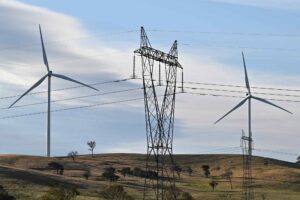Remote Australian communities living in disaster-prone locations are being urged to add resiliency to their power supplies by installing a range of grid-independent distributed energy resources, including rooftop solar and battery storage.
A new report out of the University of New South Wales examines what happens when disasters like the 2022 floods and the 2019-2020 Black Summer of bushfires leave entire communities cut off from the grid – sometimes without power for weeks, or even months.
Researchers from UNSW’s Collaboration on Energy and Environmental Markets (CEEM) says remote, disaster-prone communities could avoid this outcome by adopting stand-alone and renewable energy technologies – and governments need to make it happen.
“The resilience of energy systems is a matter of growing concern as we are set to face more frequent and intense fires and severe weather events because of climate change,” says report author Dr Sophie Adams, a visiting fellow in the School of Humanities and Languages at UNSW Arts, Design & Architecture.
“Building energy resilience in bushfire-affected communities can be a matter of life or death, given the dependence on electricity for telecommunications, water, fuel, money, and refrigeration.”
Sometimes it’s just a single line connecting communities on grid fringes, and if that is damaged it can take months for it to be repaired, says Dr Mike Roberts, report author and senior research fellow in the UNSW School of Photovoltaic and Renewable Energy Engineering.
“We’ve drawn on the experience of NSW households who’ve relied on alternative power sources in a blackout to compile this practical guide,” he says.
“With bushfires already generating headlines this year and climate experts warning of a potential severe fire season ahead, it comes at the right time to help households understand their DER [distributed energy resources] needs.”
Preparedness also means configuring household solar and batteries so they work during a blackout, as some configurations and technologies do not have the capability.
Energy alternatives
The researchers spoke to people who survived the 2019-20 bushfires and found these communities need to be prepared for the worst with a variety of distributed energy resources (DER), from generators to bottled gas, rooftop solar and home batteries.
Fossil-fuelled generators are the most common DER used to provide a back-up electricity supply during power outages due to low cost, ease of access, reliability, portability and scalability, but they require regular maintenance and a supply of fuel.
Solar generation can be affected by bad weather, smoke, ash and dirt, and both solar and batteries can be affected by extreme heat. Yet the analysis shows the impacts of smoke are comparable to – and often less than – those of bad weather.
But energy resilience also includes microgrids and community batteries.
NSW distribution network company Endeavour Energy just last month completed the first phase of construction of a “first-of-a-kind” community microgrid designed to power two coastal communities during grid outages.
The $8 million project has fitted out around 100 homes in Bawley Point and Kioloa with solar and/or batteries that can act as a self-contained energy system during emergencies, harnessing electricity from home panels and batteries, as well as a 3MW grid-connected battery strategically positioned between the two towns.
“These two towns, like many other rural and regional communities across Australia, are vulnerable to catastrophic weather events,” said Endeavour Energy chief Guy Chalkley in August.
“The grid independence provided by this microgrid becomes essential for their survival and safeguarding our regional communities.”
Disaster fatigue and entrenched inequality
Researchers also found that calls to build “resilience” in the wake of disasters is wearing some communities down. They say it should not be left entirely to them to do the heavy lifting on energy security.
“Some participants expressed a sense of fatigue and frustration around widespread calls for communities or individuals to be ‘resilient’,” the report said.
“They pointed instead to the roles and responsibilities of governments and energy providers in improving resilience at the system level, such as through investments in resilient energy infrastructure and action on climate change.”
A push to energy self-reliance can also entrench existing inequalities within communities, as people who can’t afford to install their own rooftop solar or battery have to pay more to maintain their access to the grid.
The study also highlighted the tension between the national push towards electrification of houses and the impact of doing this in areas where there isn’t enough back-up electricity supply.










